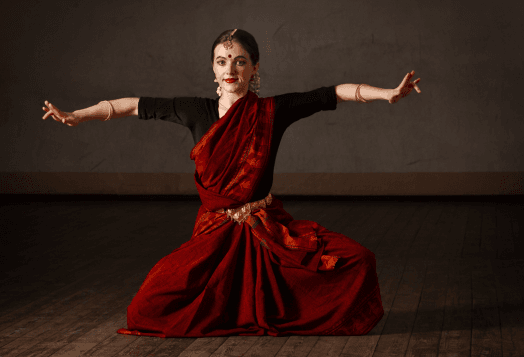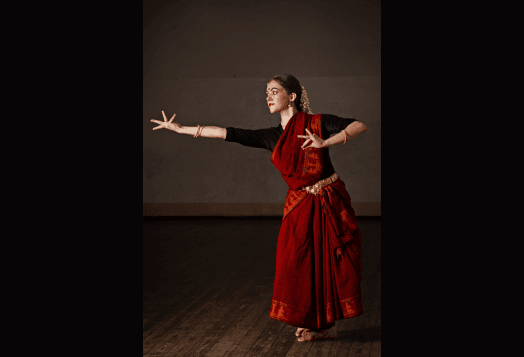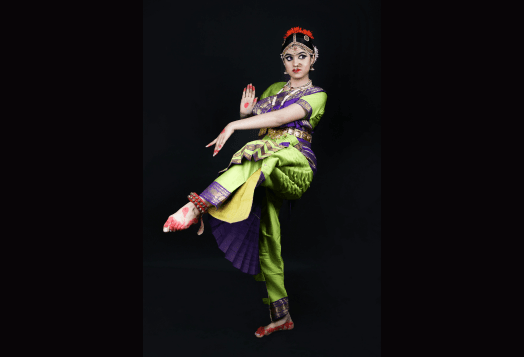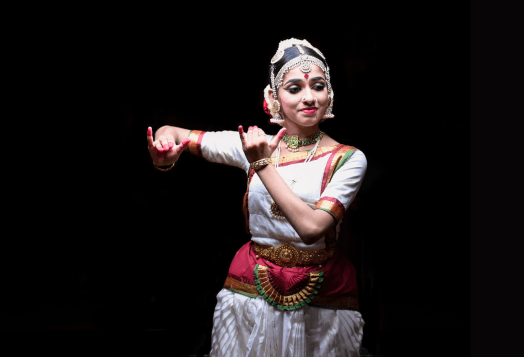
Remember those old movies where oil lamps flickered and the echo of ankle bells filled the temple air?
That’s Bharatanatyam, one of India's oldest and most revered classical dance forms. It has a rich history intertwined with the culture and spirituality of India.
From its roots as temple dance to its present-day global recognition, this art form has evolved into a powerful medium of emotional expression.
Origin of Bharatanatyam In Temples of Tamil Nadu
The origin of Bharatanatyam traces back over 2,000 years to the temples of Tamil Nadu, where it was known as Sadir dance or Sadir Attam. Let’s explore more about its history.
1. Roots in Temple Dance
Temple dancers, known as Devadasis, dedicated their lives to this divine art. Their performances weren't entertainment; they were spiritual communion.
Every step on the cold stone floors, every turn of the wrist, every flutter of the eyes carried the weight of devotion.
2. Influence of Natya Shastra
The ancient text Natya Shastra, written by sage Bharata Muni, became the backbone of this dance form. Like a master architect's blueprint, it laid down the foundation for every movement, every expression, every beat.
This treatise didn't just document dance; it created a language of emotion so precise that a raised eyebrow could convey love, a tilted head could express devotion, and a stamp of the foot could thunder with divine power.
3. The Role of Devadasis
The Devadasis were more than dancers – they were the keepers of tradition. These women expressed stories through the grace of their movements.
They nurtured this art form like mothers nurture children, passing down not just steps and songs, but souls and spirits from one generation to the next.
When Royalty Fell in Love with Divine Grace
As centuries passed, the enchanting power of Bharatanatyam couldn't remain confined to temple walls. Like a river that finds its way to the ocean, this sacred dance flowed into royal courts, where kings and queens became patrons of this divine art.
1. From Temple Dance to Court Dance
The transition from temple to court marked a beautiful evolution in the Bharatanatyam dance history. Royal patronage brought new dimensions to the dance – elaborate costumes, grand stages, and refined presentations.
Yet, the soul remained unchanged. Whether performed in a humble temple or a magnificent palace, Bharatanatyam continued to be the language of the heart.
2. Bharatanatyam in Modern Times
Colonial influence had pushed this ancient art to the shadows, but visionaries like Rukmini Devi Arundale and E. Krishna Iyer became its saviours.
They didn't just revive Bharatanatyam; they reimagined it for the modern world while preserving its ancient soul.
Under their nurturing hands, temple dance transformed into a celebrated dance performance that could grace any stage worldwide.
The Three Sacred Pillars of Bharatanatyam
In the heart of every Bharatanatyam performance lies a trinity so powerful that it can make stones weep and hearts soar. These three pillars don't just support the dance – they are the dance, breathing life into every moment on stage.
1. Nritta: The Poetry of Pure Movement

Imagine rhythm taking human form. Nritta is Bharatanatyam's celebration of movement for its own sake – geometric patterns painted in space, mathematical precision made beautiful.
When a dancer performs Nritta, she becomes a living sculpture that breathes, a poem written with the body. The adavus (basic steps) are like the alphabet of this physical poetry, each one a building block in the grand architecture of expression.
2. Nritya: Where Stories Come Alive

If Nritta is poetry, then Nritya is storytelling at its most sublime. Here, the dancer becomes a shape-shifter, transforming into every character in the story.
Her face becomes a mirror reflecting a thousand emotions – love, anger, devotion, playfulness – all flowing seamlessly from one to another.
The mudras (hand gestures) become her vocabulary, speaking a language so eloquent that words become unnecessary.
3. Natya: The Theatre of the Soul

Natya is where Bharatanatyam reaches its zenith – pure dramatic expression that can transport audiences across time and space.
Here, the dancer doesn't just perform a character; she becomes that character so completely that the stage transforms into whatever world the story demands.
A simple raised platform becomes a divine court, a lover's grove, or a battlefield, all through the magic of expression.
The History of Bharatanatyam Costume and Its Symbolism
The history of Bharatanatyam costume reveals how every pleat of the Kanchipuram saree and every piece of temple jewellery carried symbolism of divinity and power. The pleated Kanchipuram silk saree catches light and shadow, creating visual poetry with every movement.
The fabric doesn't just cover the body; it amplifies every gesture, making the dancer larger than life. Every thread tells a story.
The gold border represents prosperity and divine blessing, while the vibrant colours speak of life's various emotions.
The Bharatanatyam costumes transform the dancer into a goddess, complete with traditional jewellery that catches temple lights and creates halos of moving brilliance.
When Ancient Rhythms Conquered Modern Stages
Today, Bharatanatyam graces stages from New York's Lincoln Centre to London's Royal Opera House. This Indian classical dance form, alongside culturally rich folk dances of India, has become a cultural ambassador, carrying India's spiritual heritage across oceans.
Like a master teacher inspiring students, Bharatanatyam has influenced contemporary choreographers and dancers globally.
Its precision has informed ballet, its expressiveness has enriched modern dance, and its spiritual depth has touched souls across cultures.
Beginning Your Own Sacred Journey
Every dancer’s path starts with a single step, and Bharatanatyam invites you to take that step.
1. Finding the Right Teacher
Learning Bharatanatyam isn't just about finding an instructor – it's about finding a Nattuvanar (guru) from among expert dance teachers who understands that they're not just teaching steps, but transmitting a sacred tradition.
Look for someone who speaks the language of Carnatic music, who understands that technique without emotion is merely an exercise.
2. Importance of Regular Practice
Bharatanatyam demands dedication like a temple demands devotion. Daily practice transforms the body into an instrument of expression, muscle memory into emotional memory.
The dance culture of India emphasises that mastery comes not from intensity alone, but from consistent, devoted practice.
3. The Role of Music and Rhythm in Learning Bharatanatyam
Carnatic music is Bharatanatyam's heartbeat. Understanding rhythm, melody, and lyrics transforms a student from someone who moves to music into someone who becomes the music.
In today's digital age, platforms like Pyng offer innovative ways to learn this ancient art form, connecting traditional wisdom with modern accessibility.
Your Journey into Bharatanatyam Begins Here
The ancient rhythms of Bharatanatyam are calling to you, inviting you to discover the profound joy of expressing emotions through graceful movement.
And, learning this sacred art has become more accessible than ever. Pyng connects passionate learners with expert Bharatanatyam instructors who understand that teaching this dance form means transmitting a living tradition that has touched countless souls across millennia.




